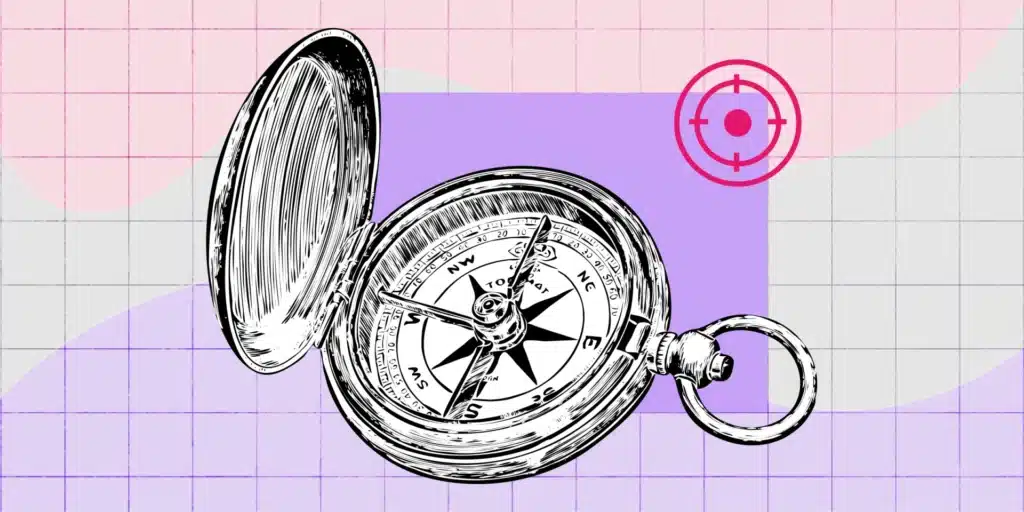Diagnostic assessment examples can help ground the concepts of diagnostic assessment in education. Plus, these examples can be an effective tool in gauging student progress and comprehension of course concepts.
What is Diagnostic Assessment in Education?
An essential part of course planning for instructors to consider is how to gauge student understanding of course concepts. At the beginning of each academic term, it’s important to consider the upcoming curriculum, and how to best assess students.
Diagnostic assessment typically takes place at the start of a semester to evaluate a student’s current level of knowledge and skills and their strengths and weaknesses on a particular topic.
Similar to ipsative assessments, where professors examine students’ prior work in order to assess their current knowledge and abilities, diagnostic assessments are a type of “assessment as learning.” This is distinct from “assessments of learning” or “assessments for learning.”
Distinction Between Different Types of Assessments
Assessment for learning, also known as formative assessments, make use of information about student progress to improve and support student learning and guide instructional strategies. They are generally instructor-driven but are for student and instructor use. Assessments for learning can occur throughout the teaching and learning process, using a variety of platforms and tools. They engage instructors in providing differentiated instruction and provide feedback to students to enhance their learning.
Assessment as learning (formative assessment) involves active student reflection on learning, monitoring of their own progress by supporting students to critically analyze and evaluate their own learning. Contrarily, they are student-driven and occur throughout the learning process.
Assessment of learning (summative assessment) involves evidence of student learning to make judgments about student progress. They provide instructors with the opportunity to report evidence of meeting course objectives and typically occur at the end of a learning cycle using a variety of tools. The evaluation compares assessment information against criteria based on curriculum outcomes for the purpose of communicating to students about student progress and making informed decisions about the teaching and learning process.
What are Diagnostic Assessments Used For?
Students may write examples of diagnostic assessments to help professors gain insight into their existing awareness and capabilities both preceding and following instruction. As such, a diagnostic evaluation can be either:
- A pre-course diagnostic assessment
- A post-course diagnostic assessment
Upon completion of a post-course diagnostic assessment, a professor can compare it against the student’s pre-course diagnostic assessment for that same course and semester in order to identify possible improvements in various specific areas. Professors can then use this information to adjust and adapt their curricula to better meet the needs of future students.
Professors can utilize diagnostic assessment in education to plan individualized learning experiences for each student that provide both efficient and meaningful instruction.
Examples of Diagnostic Assessment Tools and Technologies
There are many different educational tools and technologies that enable professors and students to get instant results from learning, including Top Hat, Socrative, Kahoot, Quizziz, Mentimeter and Quizlet. Within each of these tools and technologies are several different examples of diagnostic assessments you can apply to various disciplines.
Diagnostic Assessment Examples
Diagnostic assessments can be conducted in many different ways, including as sets of written questions, such as in short answer or multiple choice form, as well as reflection exercises, long answer questions and creative projects.
In courses containing group work, useful types of diagnostic assessments may include self-assessments in which group members each rate themselves based on various guidelines. The group then collects specific samples of each member’s prior work to understand the member’s mindset that led that member to give him or herself that rating.
Different types of diagnostic assessments include:
- Anticipation guides
- Conference/interview
- Formal assessment
- Gap-closing
- Graffiti walls
- Journals
- KWL
- Mind maps
- Parallel activity
- Performance tasks
- Posters
- Quiz/test
- Student surveys
- Word splash
Below, we share examples of how diagnostic assessments can be implemented in different disciplines, as well as easy-to-use tools that streamline the assessment design process for instructors.
Diagnostic Assessment Examples for Physics
In physics courses, instructors issue a set of conceptual questions to students at the start of the semester in order to assess the students’ current understanding of the fundamentals of physics.
In certain educational disciplines, standardized diagnostic assessment examples have been developed that instructors can use for any course within that discipline. In physics, one of the most commonly used examples of diagnostic assessment is the Force Concept Inventory, which contains question sets about concepts, like gravity, velocity, mass and force, which are typically taught in a basic first-semester Newtonian physics course.
Tools for Diagnostic Assessments in Physics
Physics instructors can use Top Hat’s Polls and Quizzes feature to design diagnostic evaluations that engage students effectively. Use polls to demonstrate student understanding and see which course concepts may need further review. Frequent quizzes can be used to help students challenge themselves.
Top Hat’s surveys and polls tools include checkpoints to help break lectures up into more manageable chunks, prompt discussions and motivate students to apply what they learn. Top Hat’s in-class polls and quizzes are multimedia-rich, helping professors engage students fully in the learning and assessment process. Examples of diagnostic assessment in education using these tools include click-on-target, word answer and word matching.
Diagnostic Assessment Examples for Psychology
The professor may conduct a survey in order to evaluate assumptions students currently hold about concepts like the nature of the mind versus human behavior.
In psychology or sociology courses dealing with controversial or sensitive topics, instructors may conduct student surveys to allow learners to pose questions or potentially controversial viewpoints anonymously, allowing for more open classroom discussions and more thorough understandings of preconceived notions students might hold.
Examples of Diagnostic Assessment in Psychology Tools
Socrative is a quiz and assessment website that lets instructors design interactive quizzes particularly suitable for complex topics in psychology, like bio-psychology, criminological psychology, statistics and research methods.
D2L lets instructors create several types of diagnostic assessments for psychology, including quizzes, surveys and self-assessments.
Diagnostic Assessment Examples for Creative and Fine Arts
Instructors can also use pre-assessment and self-assessment tests to help better direct their effort to inspire their students to engage with class material by seeing what students already comprehend about the complexities of the creative process. They can also collect initial portfolios to judge fine-arts students’ artistic abilities while simultaneously conveying the course objectives.
Examples of Diagnostic Assessment in Education in Creative Arts and Fine Arts Tools
Besides allowing professors to create customized short-form quizzes, Canvas Quizzes also contains a special “Assignments” feature that lets students upload a file for assessment. This can include a piece of creative written, illustrated or even audio/visual material. That flexibility of media allows professors to examine a broader range of skills and competencies than can be assessed through simple question and answer assessments alone.
Diagnostic Assessment Examples for STEM courses
More than other subjects, math can create a particularly large amount of anxiety in students who struggle with the subject, yet it can be significantly more difficult for instructors to target math interventions for students. If math anxiety and issues with math aren’t properly identified and targeted soon enough, however, they could easily escalate into much more deeply-rooted learning problems even more challenging for students to overcome.
Diagnostic assessments help professors gauge students’ current level of competency in complex problem-solving in a number of prerequisite areas before beginning to teach them concepts intended to build upon that knowledge. This may include basic algebraic manipulations, cell cycles, solving equations and chemical equations. By implementing data-driven approaches, professors can specifically examine how students think about math and what strategies and skills they bring with them to approach a math problem.
An effective diagnostic assessment for math typically examines only one skill or set of skills at a time. That way, professors can more easily identify areas and concepts where students may be in need of further review.
Tools for Diagnostic Assessments in STEM courses
Top Hat offers a suite of secure tests and exam features that allow instructors to create diagnostic assessments for both in-person and online learning settings with equal ease and efficiency. Whether remote and proctored diagnostic assessment for math or on-premise and open book diagnostic assessment for math, Top Hat’s secure tests and exams feature lets you choose from 14 different question types or access the Top Hat Catalog and select from a variety of pre-made test banks for mathematics diagnostic assessment.
For online testing, you can verify identities and devices, monitor activity and receive reports flagging irregular behavior. You can create, deploy and receive exams all in one place and have the exams auto-graded. Helping make mathematics diagnostic assessment easier, you can also customize question types and assignment settings and you can let students upload mathematics diagnostic assessment projects as PDF files, spreadsheets and slide presentations.
Key Examples of Diagnostic Assessments
Unit Pretests
Unit pretests are a type of diagnostic evaluation tool that does not involve students receiving any grades. Instead, unit pretests are a diagnostic test in education example of how to determine a student’s awareness of a certain unit or module of learning within a larger course before proceeding to learn it. This type of diagnostic test in education example may include multiple-choice or fill-in-the-blank questions, as opposed to those of a more open-ended nature. For best use of these examples of a diagnostic test in education, unit pretests are most effective when concentrated on the core skill or concept for students to understand rather than the finer minutiae of the subject matter.
Exit Tickets
Exit tickets are a straightforward example of how to most effectively gauge student understanding after teaching a lesson, when you’re looking to see how effectively your students have met the objectives for that lesson or unit.
Instructors ask students a simple question relating to a key concept taught in the lesson they’ve just concluded. Students jot down their answers on a “ticket” they deliver to the instructor upon their “exit” from the classroom. This allows instructors to adapt and adjust their curriculum for the following lesson or semester to align actual exit ticket results more closely with desired outcomes.
Conclusion
Diagnostic assessment examples like these provide instructors insights that help them to better create curricula customized to their students’ current level of knowledge, skills, strengths and weaknesses and, thereby, to better aid their students in achieving the objectives of the course. Likewise, professors can apply examples of diagnostic assessment in education like these after teaching a lesson or course in order to determine how well the objectives for that lesson or course were met and, based on that information, better strategize and adapt the curriculum for the next lesson or course.
As these diagnostic assessment examples show, diagnostic evaluations are generally informal and simple to use. They typically require no high-level training to create and don’t require following any standardized protocol. Instructors can alter or more finely tune their assessment methods any time they wish. Instructors can share what they discover through the various types of diagnostic assessments they use with their peers quickly and easily. These examples of diagnostic tests in education and others like them work for any discipline and, most importantly, once applied with the right tools and technologies, diagnostic assessments in education show fast and efficient results.


